Kinesis GFTI Disc frameset review
We've tested the GFTI titanium frameset from Kinesis Bikes, built up with a range of components that highlight its endurance potential.

A nice-looking titanium frameset with a smooth ride feel and the option to deck it out for longer/tougher rides. Kinesis’s wheels and the finishing kit are all good quality too. It’s just the lack of grip from the Vee tyres that lets the side down.
-
+
Comfortable frame with smooth ride
-
+
Good quality wheelset
-
+
Classy cockpit components
-
+
Lots of adaptability
- +
-
-
Tyres are not very grippy, particularly in the wet
-
-
Quite high gear range
-
-
Some chain rub when climbing out of the saddle
- -
You can trust Cycling Weekly.

The GFTI Disc is the top of Kinesis UK’s frame range. Its name is an amalgamation of GF for Gran Fondo and Ti the chemical symbol for titanium. So you can guess what it’s made of and what it’s designed for.
Buy now: Kinesis GFTI Disc Frameset from ProBikeKit for £1,799.99
It’s a nice looking frame and I’ve had questions and compliments when out riding the GFTI Disc beyond those which I would normally expect when riding even quite fancy carbon machines.
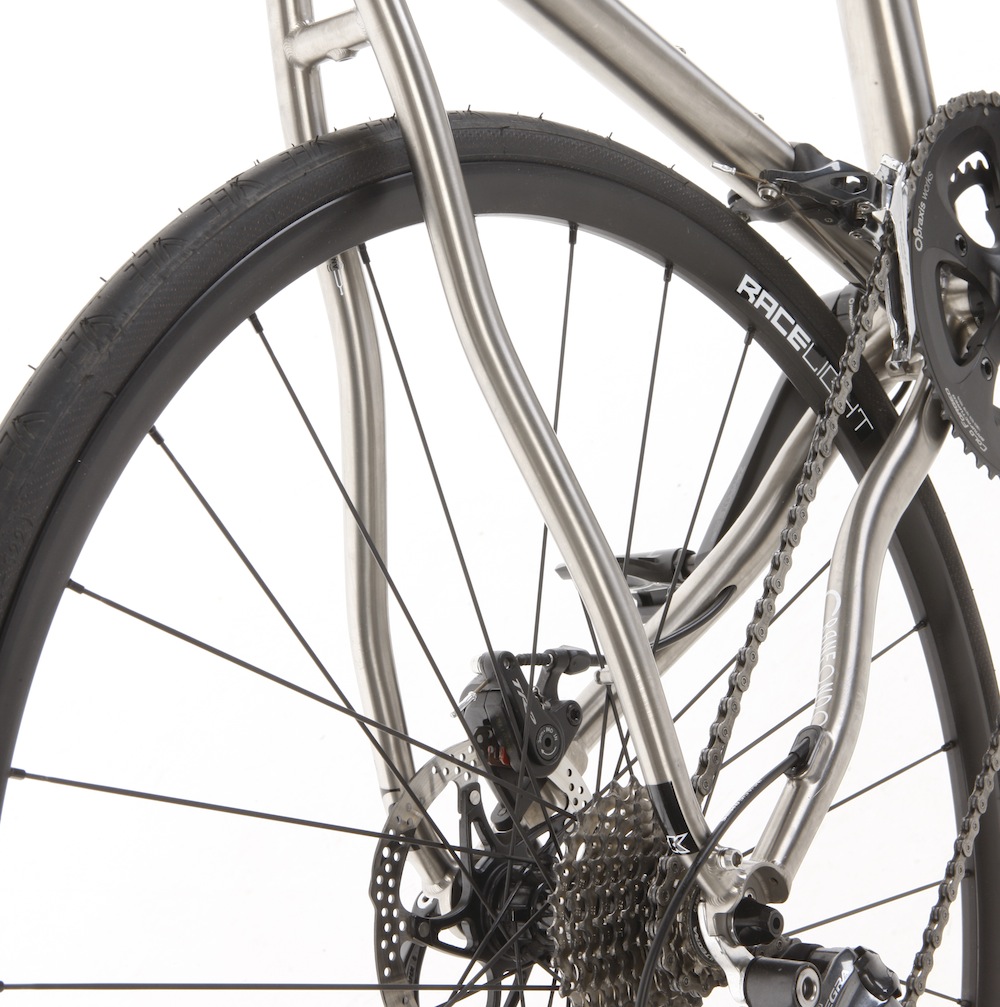
Kinesis has a number of ambassadors for the brand and many of them ride the GFTI Disc in fairly extreme environments or on ultra-endurance events, so it’s handled plenty of harsher treatment than we’ve given it when testing.
The frame
The frame is made of aero grade titanium alloy, with a brushed finish. There’s a tapered full carbon fork. The cables to the rear enter the down tube behind the head tube, run externally, but housed, under the bottom bracket, disappear back into the frame then emerge just forward of the derailleurs and brake calipers. This gives a nice clean look. The ports can be adapted for electronic shifting too.
>>> Watch: Buyer's guide to road bike wheels
The main frame tubes are straight and round, but the head tube has a distinct waist. The rear triangle is much more shaped, with outward bends towards the ends of the chainstays to improve heel clearance. The seat stays have kinks to help with shock absorption and there’s also a bridge between them to support mudguards. There’s plenty of clearance for wider tyres too – up to 28mm with mudguards.
>>> Do you really need mudguards?
The frame includes mudguard and rack mounts it you want to keep a bit drier or do some heavy load lugging. The seat tube is the currently unfashionable 31.6mm diameter, many manufacturers having swapped for a thinner seat post, but I didn’t find this a hindrance to comfortable riding. There are also flat mounts for the disc brake calipers. Frame and fork are quick release rather than using thru-axles.
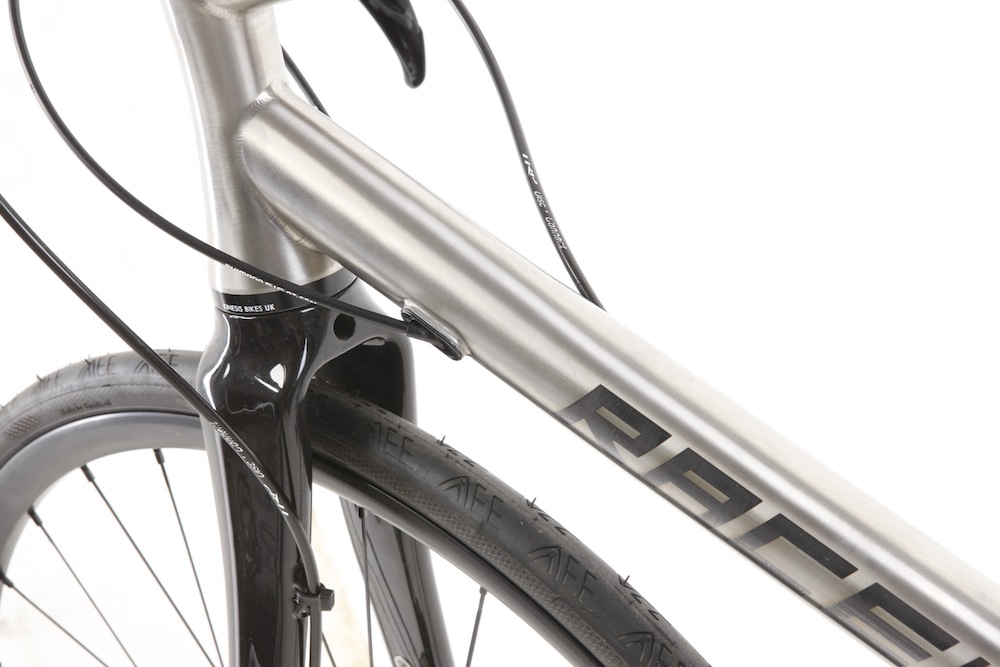
The bottom bracket is British threaded 68mm, allowing the fitting of a standard chainset with external bearings. Kinesis sells the frame as a package along with its fork and a fitted FSA headset. It’s available in seven sizes between 48cm and 63cm, to fit a wide range of riders.
Specification
Our test bike is built up with a spec to showcase a range of Upgrade Bikes’ other brands. So there’s a TRP Spyre mechanical disc brakeset, with 160mm rotors. The chainset is a Praxis Works Zayante unit with 52/36 semi-compact rings. Shifting uses Shimano’s Ultegra, with an 11-28 cassette.
>>> Buyer's guide to bike saddles (video)
The rest of the finishing kit comes from Fizik. Well-known for its saddles – on the test GFTi Disc, an Aliante model is fitted to Kinesis’s own-brand carbon seatpost – the Italian brand is branching out into other components, so there is a Fizik Cyrano R1 stem and Cyrano R3 bars. The latter, like Fiziks’s saddles and its new bibshorts, comes in different geometries based on the company’s Spine Concept, which categorises riders based on their flexibility.
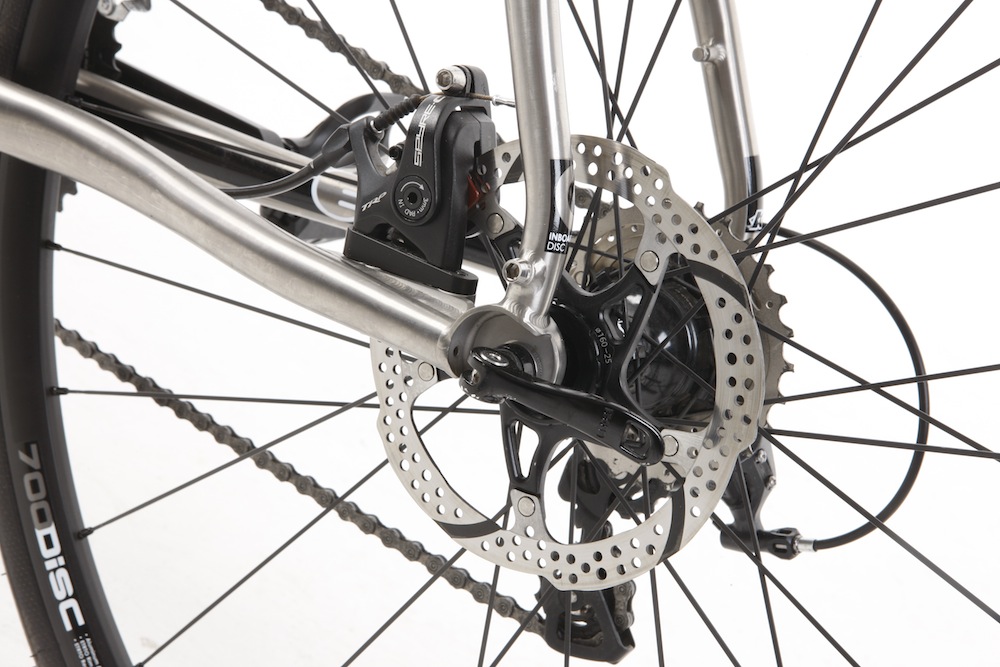
Kinesis fits its own Racelight 700 Disc wheelset. It comes with a tubeless ready 24mm wide alloy rim, straight-pull spokes and alloy hubs with sealed bearings and centerlock disc mounts. They are shod with Vee Tire Co Apache 25mm tyres although these are not tubeless ready.
Ride
Kinesis’s titanium frame looks nice and it feels comfortable to ride longer distances over UK roads. There’s enough give in the frame to soak up bumps and gravelled surfaces, without it feeling over-flexy. Although in theory the wider seatpost shouldn’t be as compliant and able to soak up road imperfections as a narrower design, in practice I did not find a great deal of vibration transmitted to the comfortable saddle.
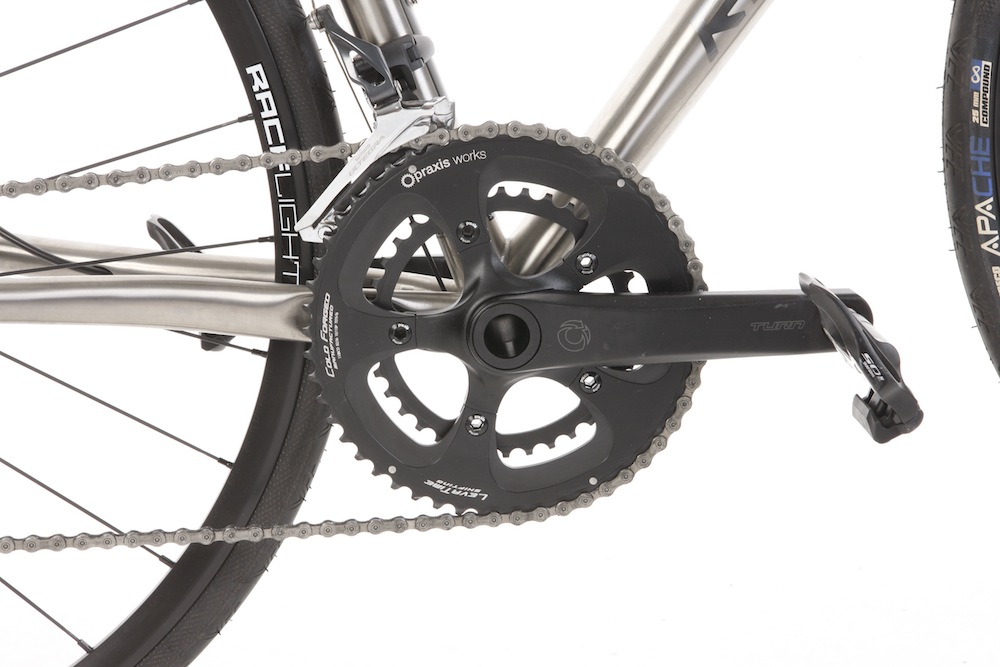
When climbing out of the saddle you can feel the greater flex in the bottom bracket over a well-designed carbon frame, with some rub between the chain and the front mech. However, riding in the saddle this ceases and there’s no noticeable displacement. I found that there was plenty of gear range for steeper climbs despite the semi-compact chainset and fairly narrow ratio cassette.
With hardly any taper from the oversized stem, the Fizik bars have quite a wide diameter to their tops. This makes for comfortable handling and very little transmission of road buzz. They have a quality, well-finished look to them too.
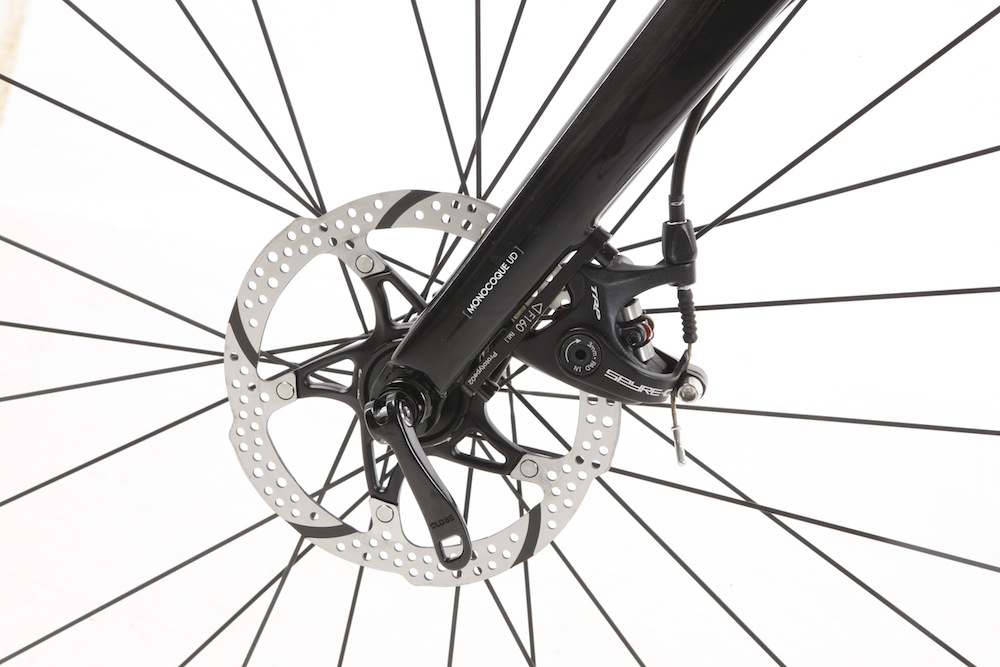
Although they handled well in the dry, I did find that the Vee tyres lacked grip on wet roads, leading to some sideslip on turns and on smoother tarmac. There are tyre brands out there which offer better wet traction. The Spyre mechanical brakes offer competent braking, although they’re not quite up to the standard of hydraulics. On the other hand you can use a standard Shimano brake lever, which I find more comfortable than most hydraulic models.
>>> Winter road bike tyre buyer's guide
Value
At £2000, the GFTI Disc frameset is not cheap and you could get quite a high spec carbon frame for similar money. But it is distinctive, should prove durable and has a lot of in-built adaptability.
Buy now: Kinesis GFTI Disc Frameset from ProBikeKit for £1,799.99
In particular, the option to fit wider tyres, mudguards and a rack mark the GFTI Disc out as a frame which could be put to a number of uses. It has the track record via Kinesis’s sponsored athletes to prove its abilities too.

Thank you for reading 20 articles this month* Join now for unlimited access
Enjoy your first month for just £1 / $1 / €1
*Read 5 free articles per month without a subscription

Join now for unlimited access
Try first month for just £1 / $1 / €1
Get The Leadout Newsletter
The latest race content, interviews, features, reviews and expert buying guides, direct to your inbox!
Paul started writing for Cycling Weekly in 2015, covering cycling tech, new bikes and product testing. Since then, he’s reviewed hundreds of bikes and thousands of other pieces of cycling equipment for the magazine and the Cycling Weekly website.
He’s been cycling for a lot longer than that though and his travels by bike have taken him all around Europe and to California. He’s been riding gravel since before gravel bikes existed too, riding a cyclocross bike through the Chilterns and along the South Downs.
-
 'This is the marriage venue, no?': how one rider ran the whole gamut of hallucinations in a single race
'This is the marriage venue, no?': how one rider ran the whole gamut of hallucinations in a single raceKabir Rachure's first RAAM was a crazy experience in more ways than one, he tells Cycling Weekly's Going Long podcast
By James Shrubsall Published
-
 Full Tour of Britain Women route announced, taking place from North Yorkshire to Glasgow
Full Tour of Britain Women route announced, taking place from North Yorkshire to GlasgowBritish Cycling's Women's WorldTour four-stage race will take place in northern England and Scotland
By Tom Thewlis Published
-
 Positive signs for UK bike industry as Halfords cycling sales grow
Positive signs for UK bike industry as Halfords cycling sales growRetailer admits that the impact of Donald Trump's tariffs remains to be seen
By Tom Thewlis Published